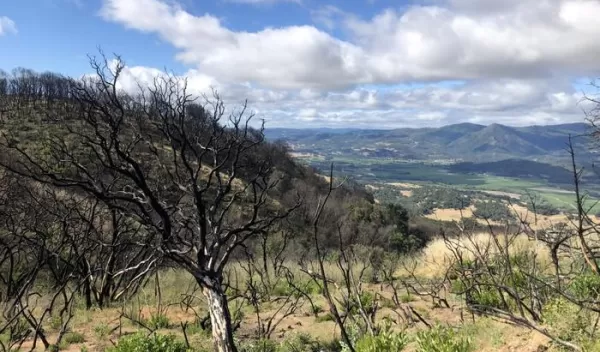
Hidden cameras spot wildlife returning home after 2018 megafire
During the summer of 2018, the Mendocino Complex Fire ripped through the University of California Hopland Research and Extension Center (HREC), transforming the Northern California property's grassy, oak-dotted hillsides into a smoldering, ash-covered wasteland.
"It felt like something out of 'The Lord of the Rings' — like Mordor. It was hard to imagine much surviving," said environmental scientist Justin Brashares of the University of California, Berkeley.
But mere months after the fire, animals like coyote, gray foxes and black-tailed jackrabbits were seen returning to the area, spotted by a grid of motion-sensor camera traps that Brashares' lab has operated since 2016 at the HREC, a multidisciplinary research and education facility located on the banks of the Russian River.
"We were surprised that many species seem to be resistant [to the impacts of the fire]," said Kendall Calhoun, also of UC Berkeley. Calhoun, whose graduate education is funded through a U.S. National Science Foundation Graduate Research Fellowship, is the lead author of a study that analyzed more than 500,000 camera grid images taken at the HREC in the years before and after the Mendocino Complex Fire to understand how the blaze impacted small- and medium-sized mammals on the property.
“This work is an excellent example of the high-quality research being conducted by graduate students across the country,” said Jacqueline Huntoon, director of NSF’s Division of Graduate Education. “It’s great to see a Graduate Research Fellow completing such an important study.”
The study, published in the journal Ecosphere, is one of the first to compare continuous wildlife observations made before and after a megafire. It is also one of a limited number of studies to focus on the impacts of megafires on California's oak woodlands. Oak woodland ecosystems comprise a large portion of the state but are underrepresented in wildfire research compared to the conifer forests of the Sierra Nevada.
"For the great majority of Californians, these oak woodlands and grassland savannahs are what we think of as the characteristic biome or ecosystem type for our state," Brashares said. "It's the primary ecosystem type for livestock grazing, and it's also the primary habitat type that's used to grow grapes for wine. It's a critical ecosystem type, and it's worth managing well."
Of the eight animal species included in the study, six were found to be "resistant" to the impacts of the fire, using the area in the same ways and with approximately the same frequency as they did before the fire. These species included the coyote, black-tailed jackrabbit, gray fox, racoon, striped skunk and bobcat. The western gray squirrel and black-tailed deer, however, appeared to be more vulnerable to the impacts of the fire.
